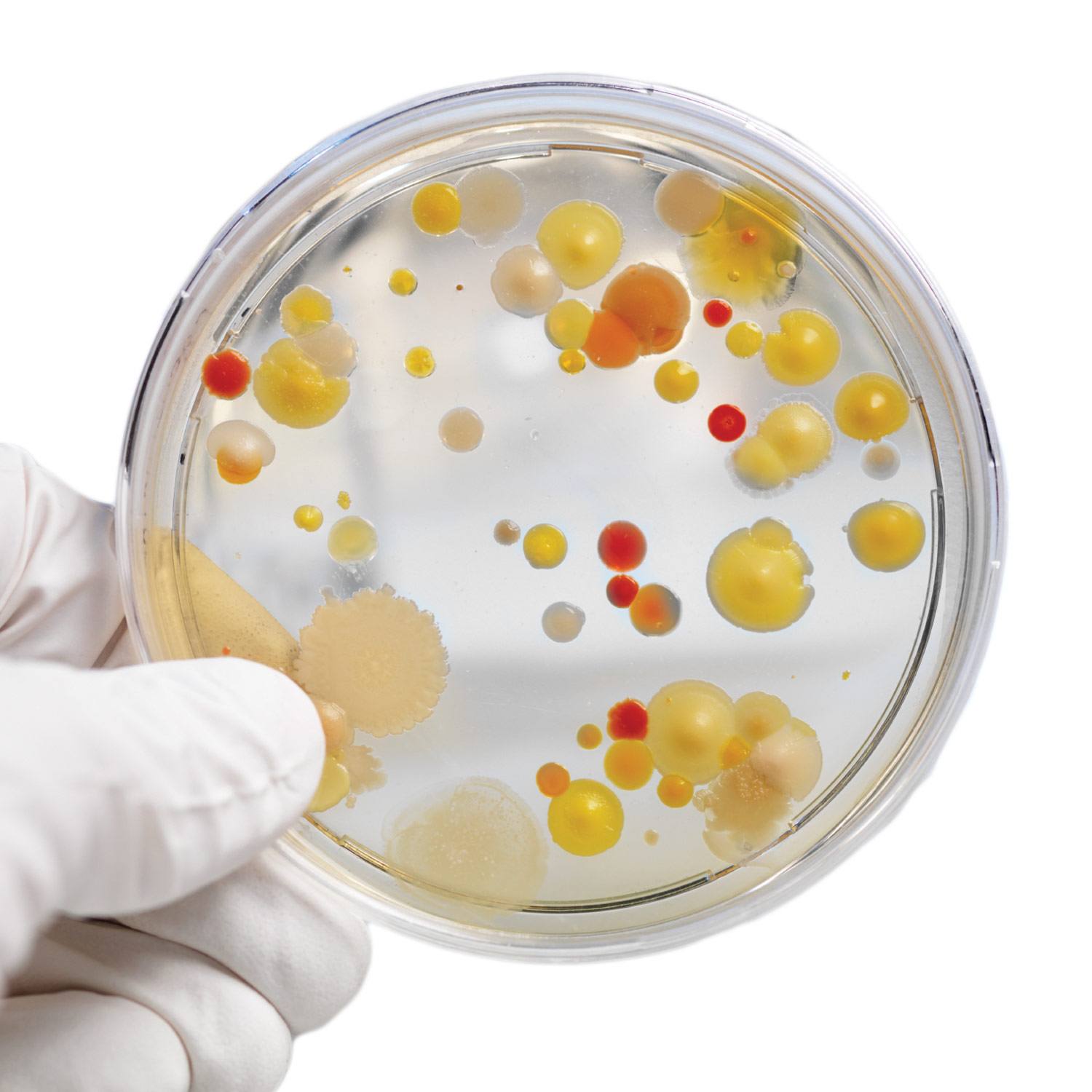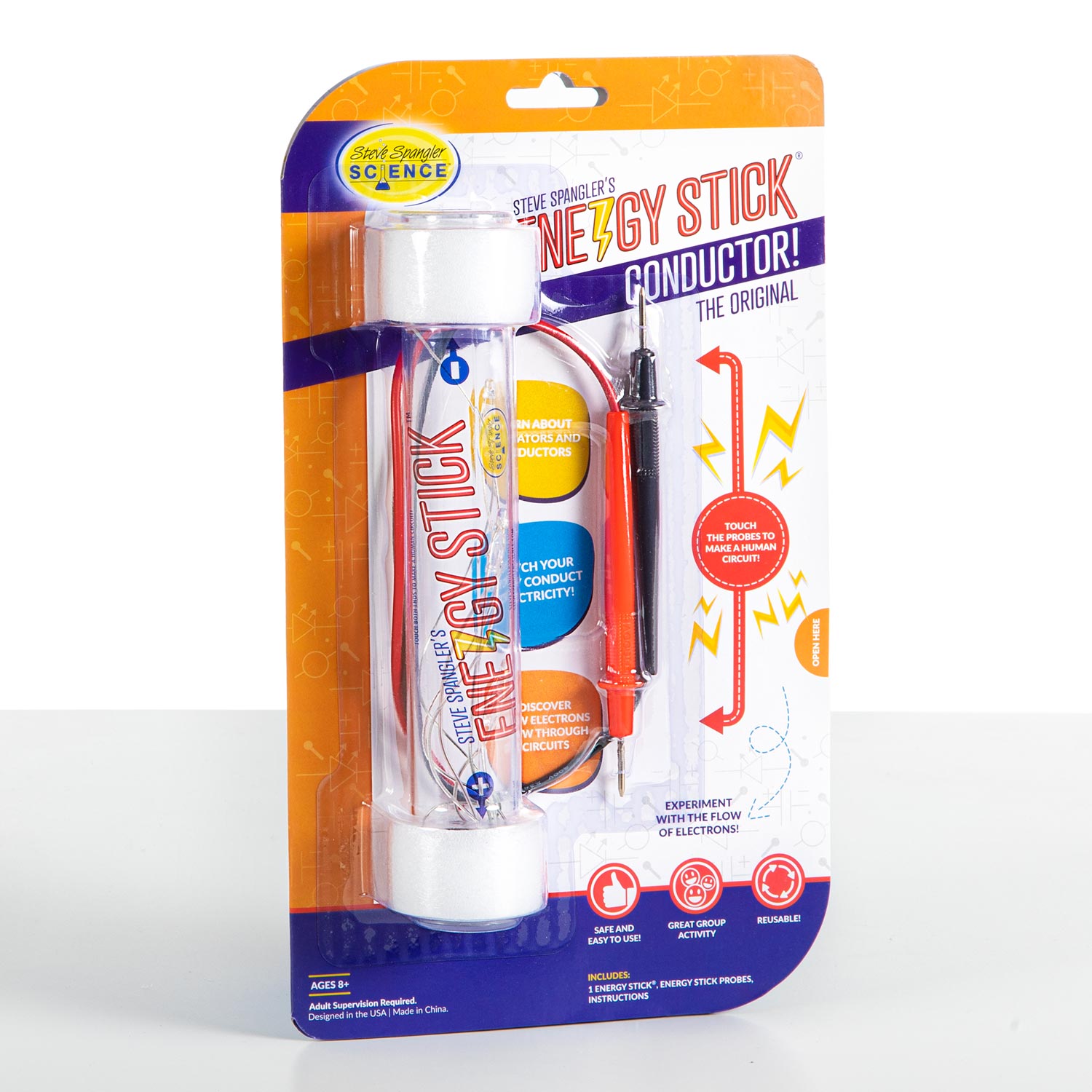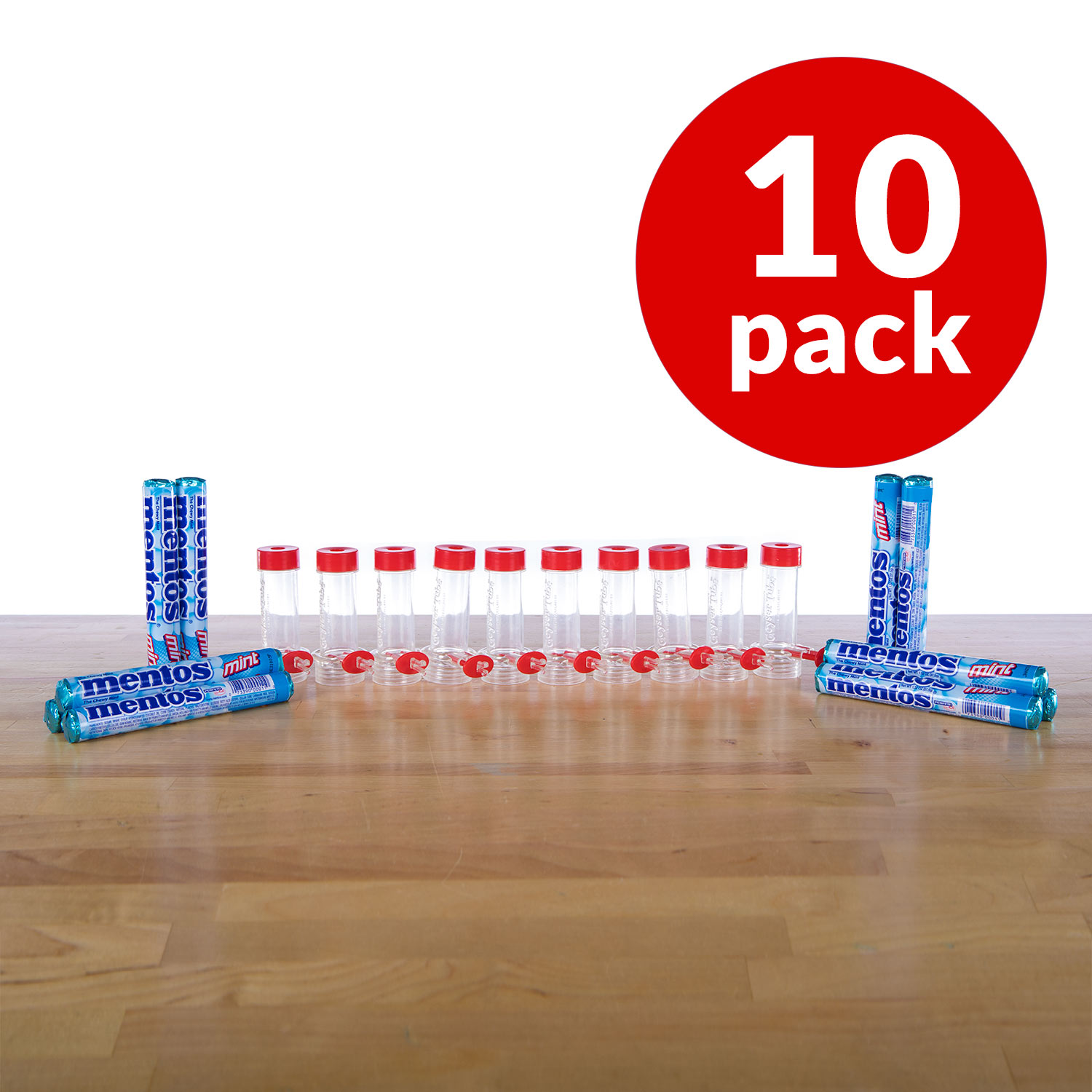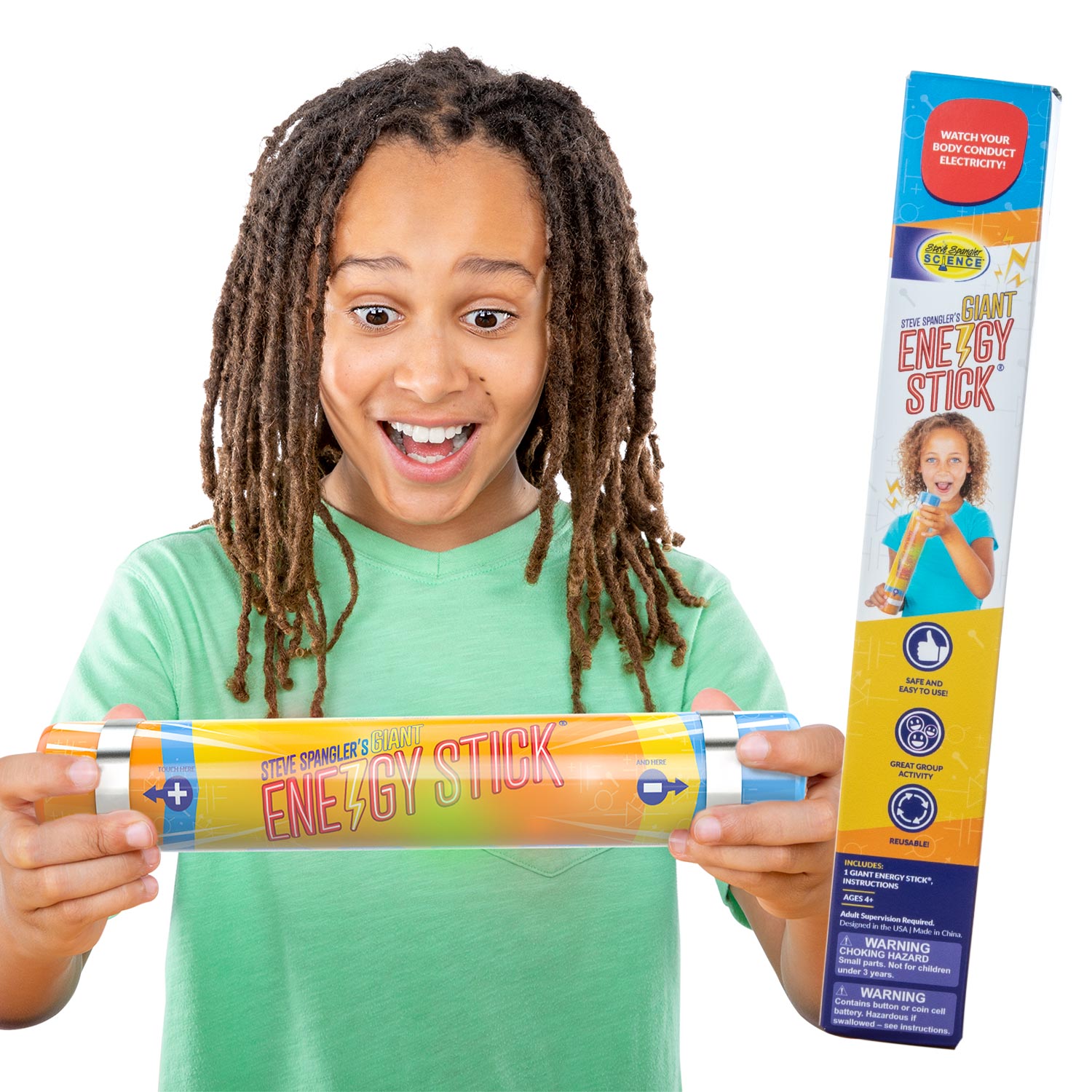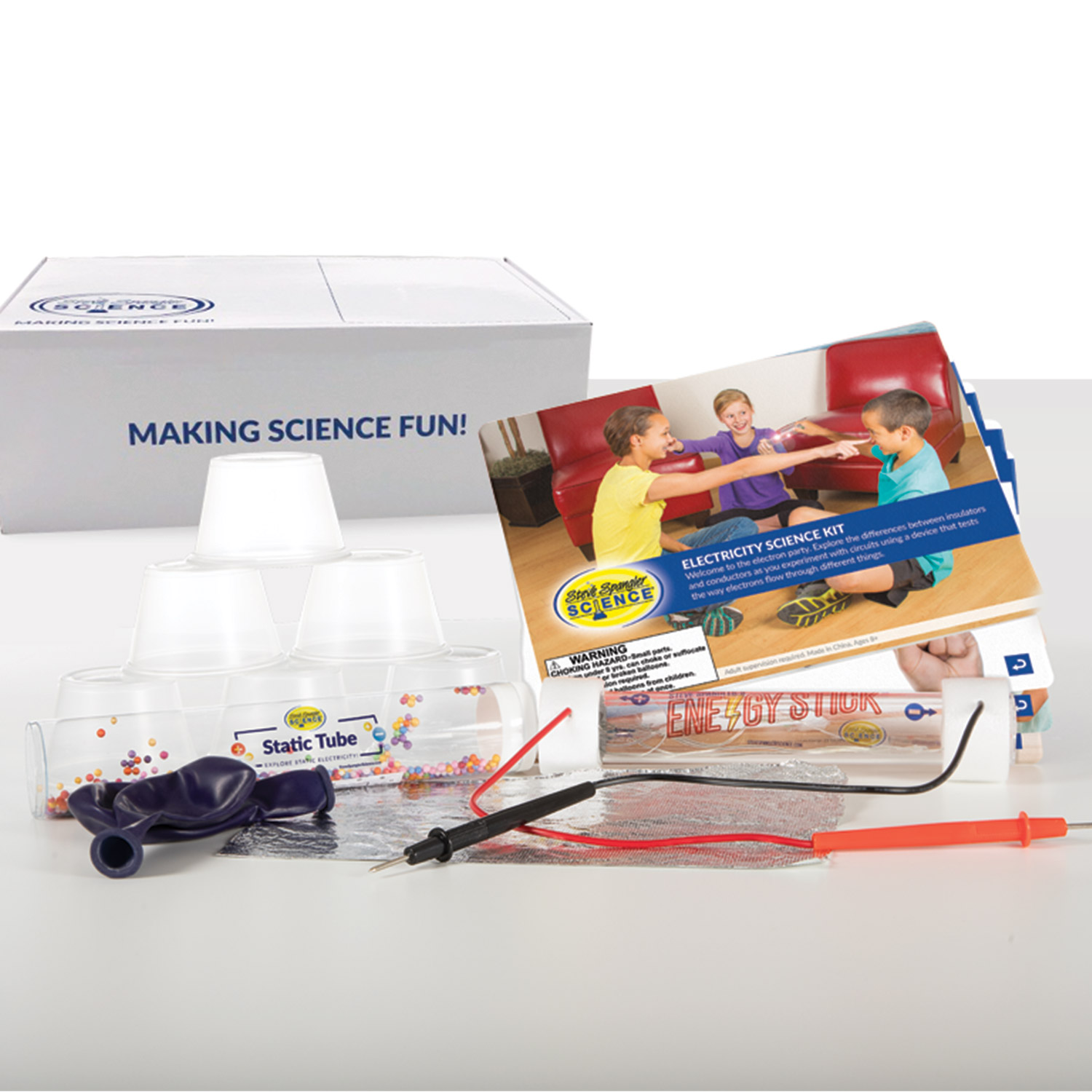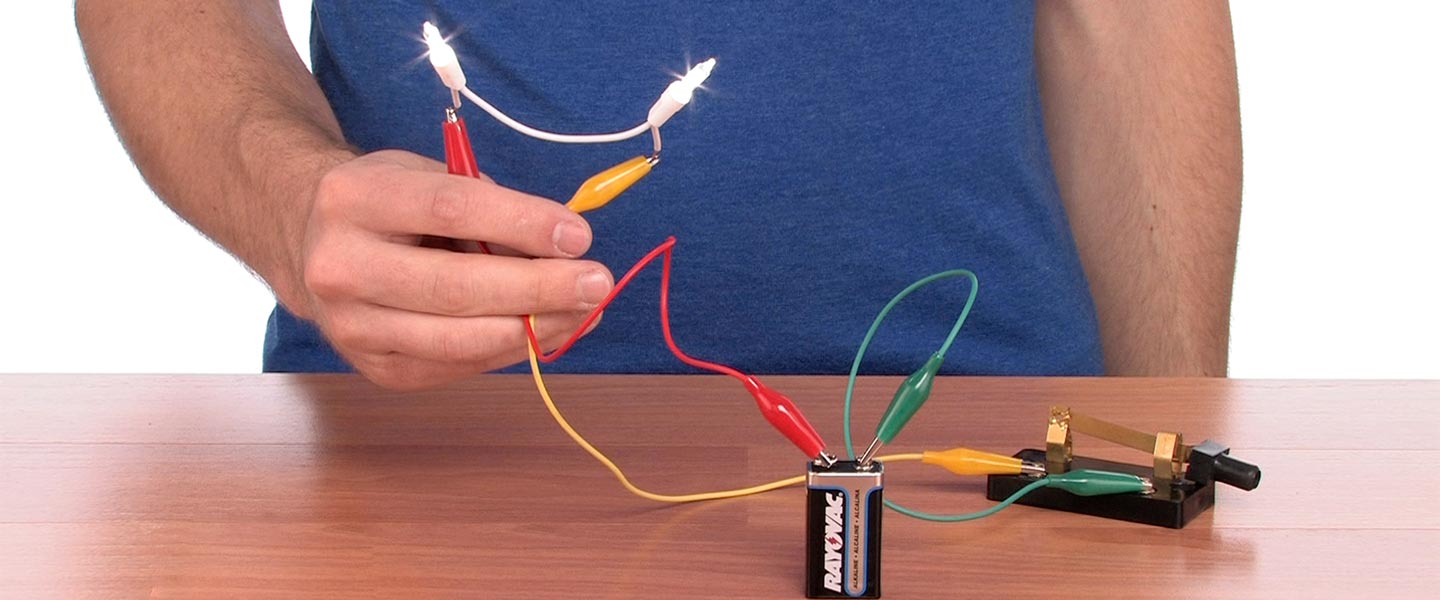
Circuit Maker Experiment – Building a Circuit at Home
Electrical Circuit Science Project
Making a Circuit
You enter a dark room and reach for a switch to turn on the lights. Most of the time, you don’t even think about it — you just do it. Most of us are so used to electricity that we don’t really stop to think about how it works. The Making a Circuit experiment from Steve Spangler Science lets us slow down and consider what’s really happening every time we flip the light switch. Electricity works when it moves in complete circuits and this activity shows you how to build a simple circuit by yourself and without a laboratory.
SICK Science® is a registered trademark of Steve Spangler, Inc. All Rights Reserved.
Experiment Materials
- 9-volt battery
- Strand of small, decorative lights
- Small knife switch
- 3 Alligator clips
- Scissors
- Adult supervision
Experiment Videos
Experiment
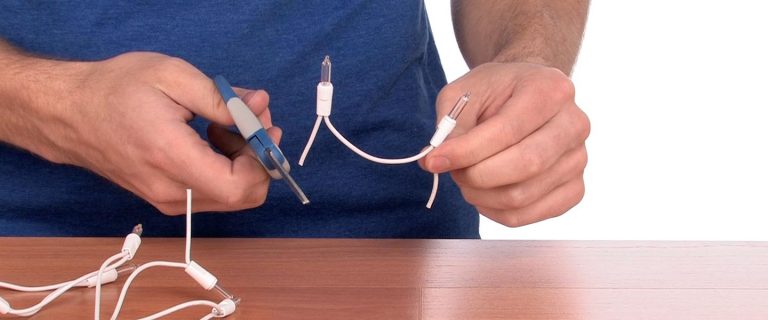
1
To get started, test the old strand of decorative lights and make sure at least two bulbs in a row are working. Cut these two lights out of the strand. You want as long a wire as you can get on both ends of the lights.
- NOTE: Make sure the light strand is not plugged in when you cut it.
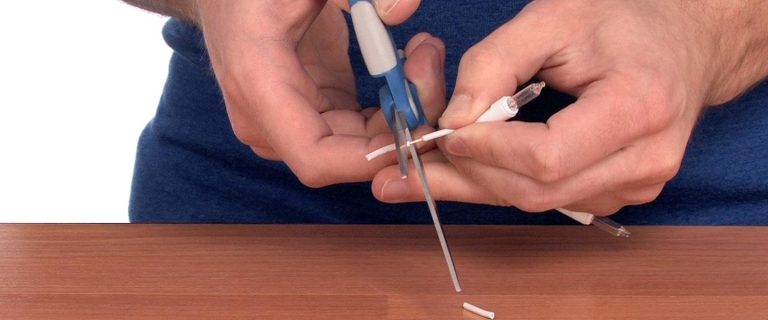
2
Use the scissors or wire strippers to remove 1/2 inch (13 millimeters) of the covering on the wire on each end. The outside covering is called the jacket and is usually flexible and easy to cut through. Be gentle when cutting to make sure you don’t damage the copper wires inside.
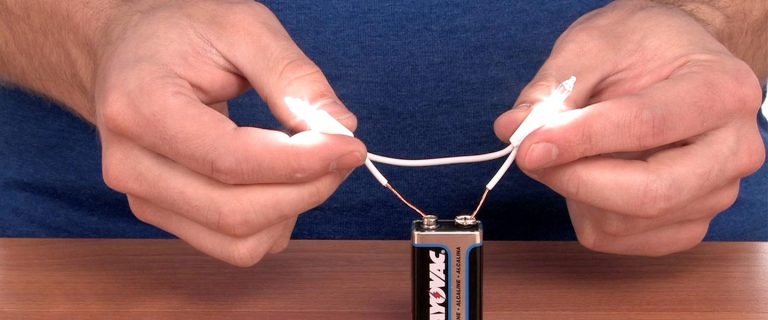
3
Get your battery ready. This next step is called a sanity check. It’s likely that the battery is good and that the lights still work. Just to be sure, though, touch a bare end of the wire to each silver terminal, or pole, of the battery. If the lights glow, move on to the next step. If they don’t, grab a new battery and try again.
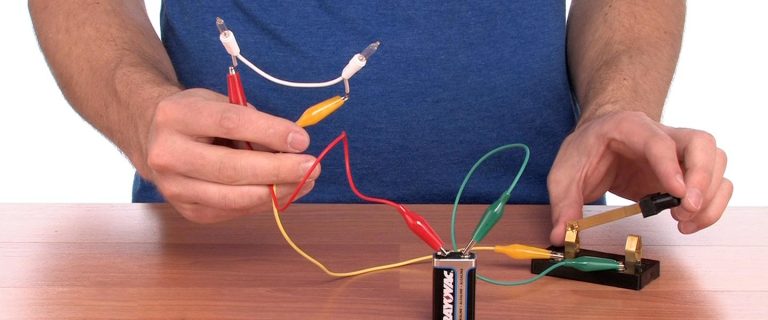
4
Make sure the blade on the knife switch is up and then attach an alligator clip to one of the terminals on the switch. Attach the other end of the alligator clip to a bare copper wire on the light strand.
Attach a second alligator clip to the other bare copper wire on the light strand. What’s happening? Lights on? Not yet.
Attach the other end of the second alligator clip to one of the silver terminals on the battery. The third alligator clip goes on the other battery terminal and then to the other terminal on the knife switch. Are the lights on yet?
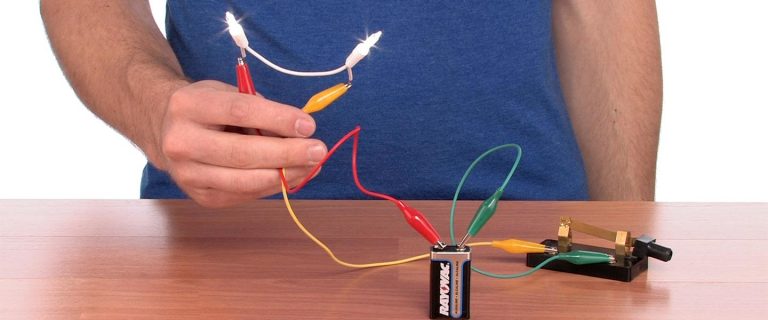
5
Close the knife switch and — finally — the lights are shining. The circuit is now complete and the lights turn on.
How Does It Work
Using the battery, the alligator clips and the light strand, you make a very simple circuit. There’s a push from a power source (the battery), a path for the electrons to follow (wires, lights and a switch) and a final path back to the power source. The electron movement begins on the negative pole of the battery. Electrons get pushed through the circuit to the positive pole by an electric field. Your job is to plan and build the circuit correctly so the moving electrons can do the jobs you want done along the way. In this case, the circuit was built to power some lights.
You used a battery in building a circuit. There are many different kinds, shapes and sizes of batteries, but they all have the same purpose and two terminals. A battery’s purpose is to deliver moving electrons, or a current. The parts of a battery are designed to convert chemical energy into electrical energy so electrons can flow through a circuit. On one of the two terminals of a battery, there’s an excess of negative charges, while positive charges come together on the other terminal. Electrons flow at tiny fractions of centimeters and are pushed through a circuit from the negative terminal of the battery to the positive terminal.
A switch is used to either block or allow the free movement of electrons in a circuit or to redirect their movement into another circuit or device. If the switch is open, there is no pathway for the electrons. If the switch is closed, the electrons can move through the circuit — this is how the lights in your house work. When the switch is off, there is no pathway for the electrons to move, so the lights are off. When the switch is on, the path is completed, so electrons can move through the circuit and power the lights.
Take It Further
You’ll be working with electricity in this circuit activity, so you’ll need to be careful. Don’t directly connect one terminal of the battery to the other terminal or anything metal with the alligator clips. Electrons move very quickly through the system this way, creating serious heat in the wire, which can burn fingers or cause a fire. It also drains the battery very quickly.
Safety Information
You’ll be working with electricity in this circuit activity, so you’ll need to be careful. Don’t directly connect one terminal of the battery to the other terminal or anything metal with the alligator clips. Electrons move very quickly through the system this way, creating serious heat in the wire, which can burn fingers or cause a fire. It also drains the battery very quickly.



